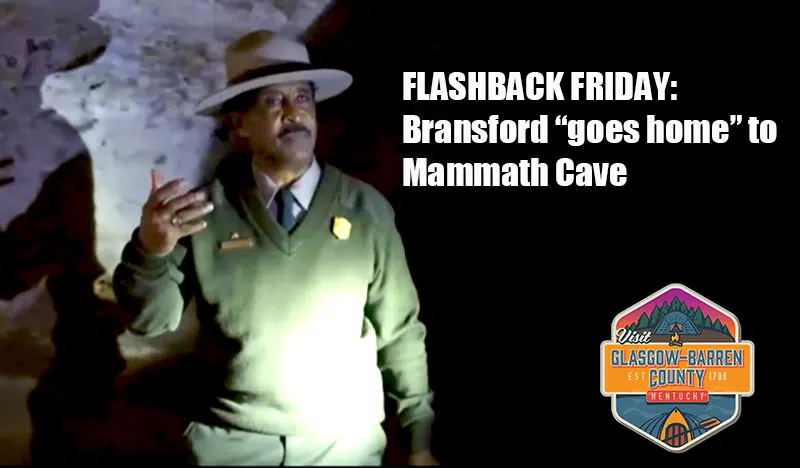BY JENNIFER MOONSONG
GLASGOW NEWS 1
The contribution of black people in Kentucky’s history cannot be adequately recognized without recognizing the Bransford family, who played a significant and role in the shaping and development of Mammoth Cave National Park.
Today, 76-year-old descendant Jerry Bransford of the original Branfords of Mammoth Cave, along with brothers Nick ad Matt, can be found guiding cave tours at the park just like his ancestors; however, Bransford is more than a guide. He is a living, connected piece of history who has devoted the past two decades of his life to telling his family’s story to the droves of visitors from around the globe. For Bransford, taking a postretirement job a tour guide is the same thing as going home.
“Next Tuesday will be my 19th season at Mammoth Cave,” Bransford said. “I can only tell yo the joy and satisfaction I feel in being there. When I went to Mammoth Cave as a young person each Memorial Day weekend, my father would say ‘Let’s go home.’”
Bransford’s father David left the land of Mammoth Cave at the age of 17 when a Decree of Eminent Domain left the black families who had lived and worked in Mammoth Cave displaced from the land.
“There were 507 families on 54,000 acres when it was issued. What the black men did not know was there was no plan for them to stay on the land. The old master said there was not a place there for coloreds, but the white men kept their jobs as guides. And at that time, the guides were integrated and worked well together,” Bransford said.
Bransford’s great-uncle Clifton asked once again his job to be spared and was told again there was no place for coloreds there. He told Judge Jennings that his family had been on the land for four generations, but there was no mercy.
When the Great Depression came along and the New Deal came along, men agreed to go to work for a dollar a day. Clifton went to work with a pick and shovel busting rocks.
“I can only imagine the humiliation of working in the cave all of your life as a guide and then to only be allowed work with a pick and shovel,” Bransford said.
For many years, the Bransford family legacy at Mammoth Cave went unrecognized.
“Around 1975, a journalist and writer from WKU started researching the cave’s history and asked who the black people in the photos were. She was told Stephen Bishop, but the photos were not all him and not all that old. That is when the Bransford connection started coming to light,” Bransford said. Since that time, their significant contributions have been thoroughly documented and recognized. Joy Medley Lyons, author, has researched the subject extensively, a process the with which the Bransford family helped, and published a book called “Making Their Mark: The Signature of Slavery at Mammoth Cave.”
Bransford is proud of his family’s legacy. When he was encouraged by Lyons to apply for a job as a tour guide at the cave, he had just retired from his position he held with a company for 30 years.
“I had just retired and cleaned out my locker. I wasn’t sure, but I applied. The first time, I missed the deadline; the second time they hired me. I couldn’t be happier with it. It means so much more now that I walk in those footsteps, so much more that I see their names on the cave walls, so much more that I realize the dangers they faced as young slave men,” Bransford said.
NOTE: This was the first in a two-part series about the Bransfords’ role at Mammoth Cave. Read the second at this link.

Comments